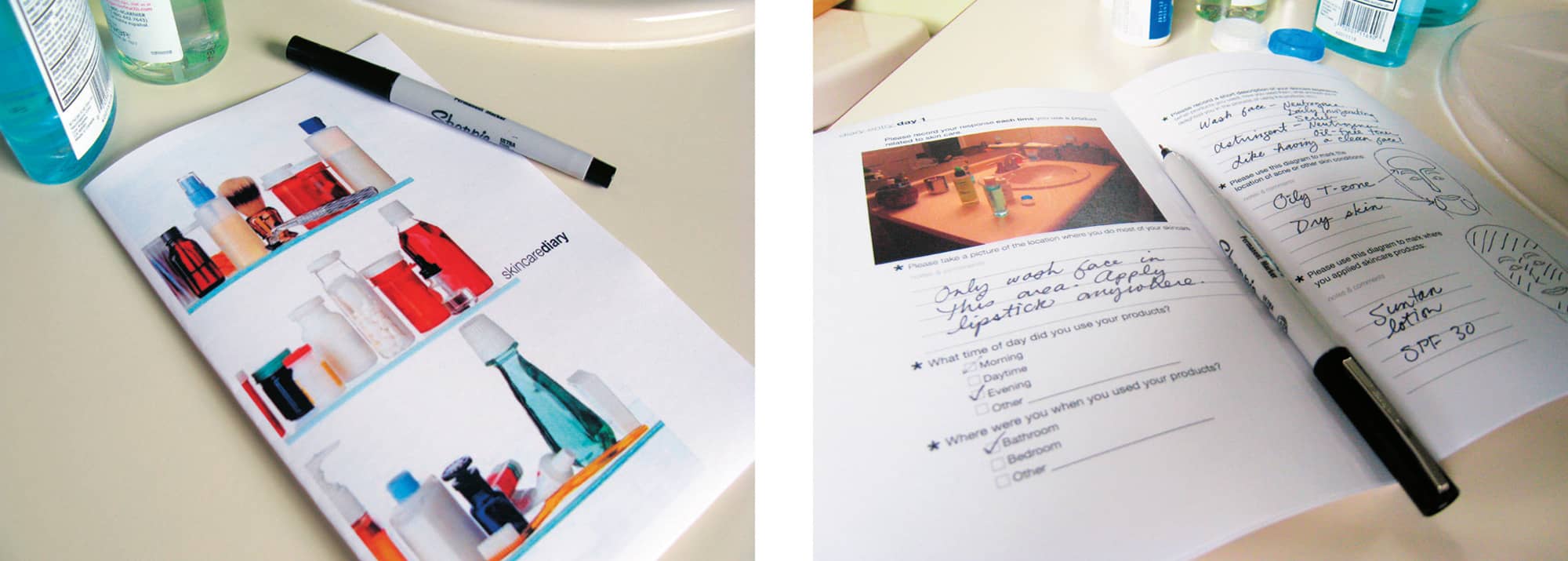RESEARCH METHOD
30 Diary Studies

Diaries or journals are guiding artifacts that allow people to conveniently and expressively convey personal details about their daily life and events to design teams.
Diary studies are ideal for collecting information from participants across time, sampling their thoughts, feelings, or behaviors at key moments throughout a day, week, or month.
Blank journals are issued to participants in person or by mail. The diary must be designed for portability and ease of use. An overview of the topic of interest is included up front, with instructions on how and when to complete requested entries, and a sample entry. Participants may be requested to document each time they engage in a particular behavior, encounter a product or situation, or have specific types of interactions. Other studies may require regular entries at particular times of day, or a log of items in summary at day’s end. When used within experience sampling, diary entries are made at random times when the participant is signaled by a device or alarm.
Each page entry should be guided with a brief question or prompt, with appropriate space for encouraging the desired length of text. Creative page formats can be used to invite other forms of recording as well, such as sketches or drawings, symbols, or photographs, text or visuals that can be circled or checked, or the use of provided stickers. A small set of questions or space for reflections, and a request for demographic information, is sometimes placed at the end of the diary.
Diary studies are useful tools in exploratory research, preparing the designer for further research by contributing to an understanding of participant user groups. While diary studies are typically conducted with a relatively small sample, common themes and patterns can emerge. The synthesized information is intended primarily for inspiration and to indicate design implications for generative design. However, diaries can also be used in generative research. For example, journals are often issued to sensitize participants to research topics leading up to participatory design exercises such as collage, flexible modeling, or co-design workshops. In rare cases, diaries may be used for usability studies or evaluation, as a means of collecting feedback from users testing products in context over time.
While traditionally diary studies have been completed with paper and pen, technology affords novel forms of entries such as digital photos, video, and audio that may be recorded on digital devices, and sent via email or uploaded on provided sites. Digital diaries can also be completed as an integrated component of online or device interactions, with entry forms imbedded directly within software interfaces.
Diary studies are used to sample self-reported participant interactions or events over time.

Traditional diary studies are conducted using pen and paper journals, here for a study on skin care regimens..
Diary design by Aya Horiguchi

Digital diary with user photo and text entries describing Christmas shopping experiences.
Courtesy of dscout.com / Gravity Tank
